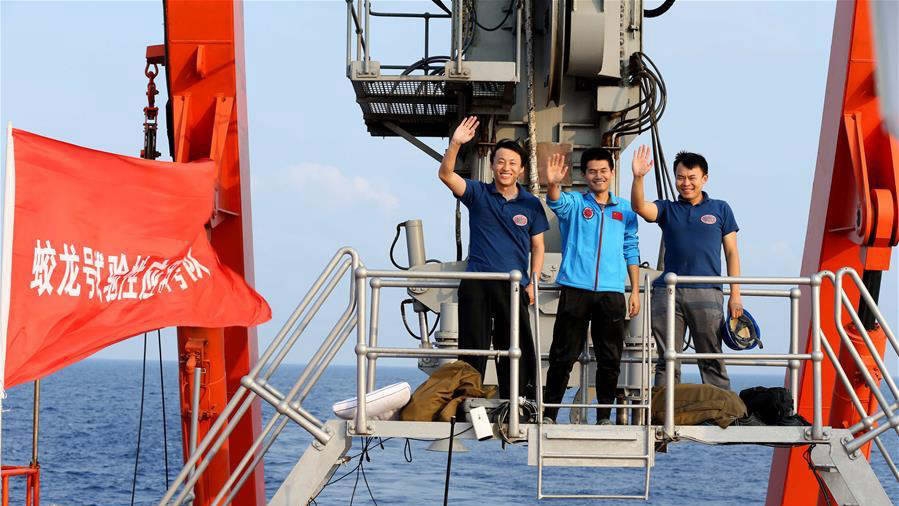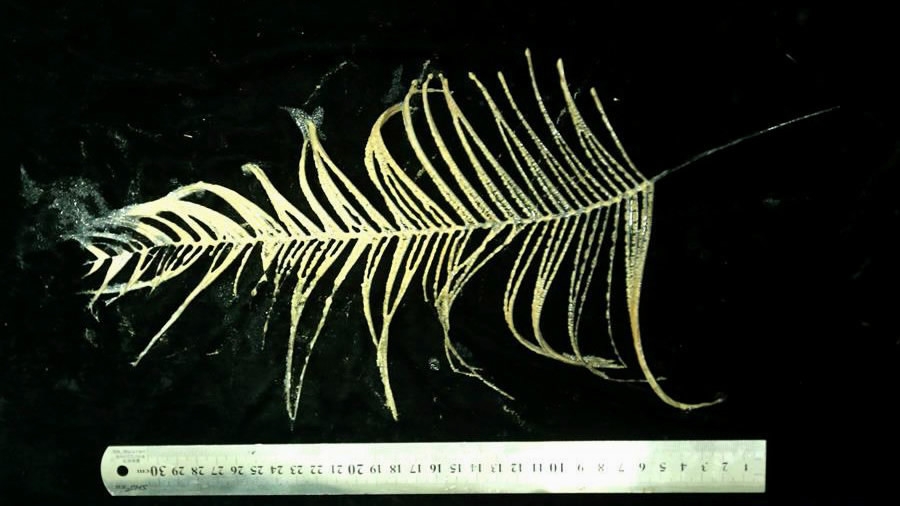Jiaolong, China's manned submersible, explored submarine turbidity currents in the South China Sea on Saturday.
With a maximum depth of 2,980 meters, Jiaolong was underwater for nine hours and 54 minutes in its seventh dive in the second stage of China's 38th oceanic scientific expedition, which will last until May 13.
Three crew members in the submersible conducted surveys and sampling and measured environmental parameters. They brought back samples of sediment and seawater near the seabed as well as high-definition photos and video footage.

Bi Naishuang (L), Liu Xiaohui (C) and Tang Jialing, wave after conducting a dive mission of Jiaolong, China's manned submersible, on May 6, 2017. /Xinhua Photo
A turbidity current is an underwater current flowing swiftly down a slope owing to the weight of sediment it carries.
Turbidity currents are one of the most important ways to deliver land-based sediments to deep sea. The amount of sediments carried by a large turbidity current may exceed the sum carried by worldwide rivers for one year, said Bi Naishuang, associate professor with Ocean University of China (OUC) and also the "passenger" on this dive.
“A turbidity current has great erosional competency. Some submarine canyons were formed by it,” said Bi.

Photo taken on May 6, 2017 by Jiaolong, China's manned submersible, shows escarpment landform in the South China Sea. /Xinhua Photo
Xu Jingping, another professor with OUC, said China started research on submarine turbidity currents, a major challenge in geoscience, relatively late.
"The dive helped us to obtain evidence of the topographic features and sediment of modern turbidity currents in northeastern South China Sea. It enriched our scientific understanding of canyon turbidity current in the region and provided key data and technical support for future research," Xu said.

Photo taken on May 6, 2017 shows a biological sample taken by China's manned submersibleJiaolong in the South China Sea. /Xinhua Photo
The 38th oceanic scientific expedition started on February 6. Jiaolong completed a dive in the northwestern Indian Ocean earlier this year as part of the first stage of the mission. It will conduct surveys in the Yap Trench and the Mariana Trench in the third stage.
(Source: Xinhua)
Related stories:









